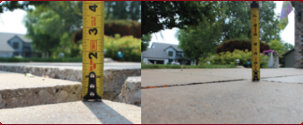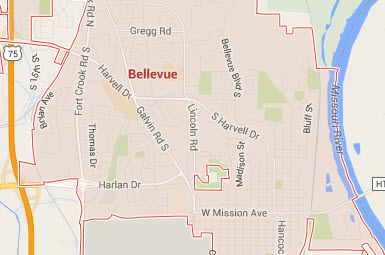Mudjacking vs Polyurethane
Mudjacking is old technology that is quickly being replaced by polyurethane foam lifting.
In mudjacking a series of 2-4 inch holes are drilled in the concrete to hydraulically pump a slurry blend of rock and cement to pry up a sinking slab of concrete. This slurry weighs around 100 pounds per cubic foot and can overburden already loosely compacted soil allowing for the settling issue to persist. Improper soil compaction is one of the biggest reasons for sinking concrete, so adding a heavy concrete mixture only adds more weight to this loosely compacted soil and can actually cause more sinking in the future.
Once the traditional mudjacking is completed the large access holes are then patched, leaving large unsightly circles that do not match the existing concrete.
Improper rainwater runoff is another major reason for concrete slab sinking. Once this runoff washes out enough of the dirt subgrade concrete sinking can occur. With mudjacking the slurry used to lift the concrete can actually retain moisture from the surrounding soil and rainwater runoff which can compromise the materials used in mudjacking. This moisture can eventually erode out the mudjacking material or allow for that moisture to freeze within the mixture. This can allow the slab to sink again and bring need for additional mudjacking to again correct the problem.
Since mudjacking is a cement based product, dry time can be an issue and can leave the repaired area unusable for up to 24 hours. This can create access issues for your home or business during and after the repairs.
Fortunately, there is now a better repair solution for your concrete settling issue in polyurethane concrete leveling brought to you by Precision Concrete Lifting.
- Polyurethane foam weighs significantly less than traditional mudjacking
- Poly foam lifting strength nears 6000 lbs. per SF
- The injection holes are much smaller and fewer are needed
- Polyurethane foam does not hold water and will not contribute to future erosion
- The foam dries in seconds, not hours, leaving you less down time and interruption




